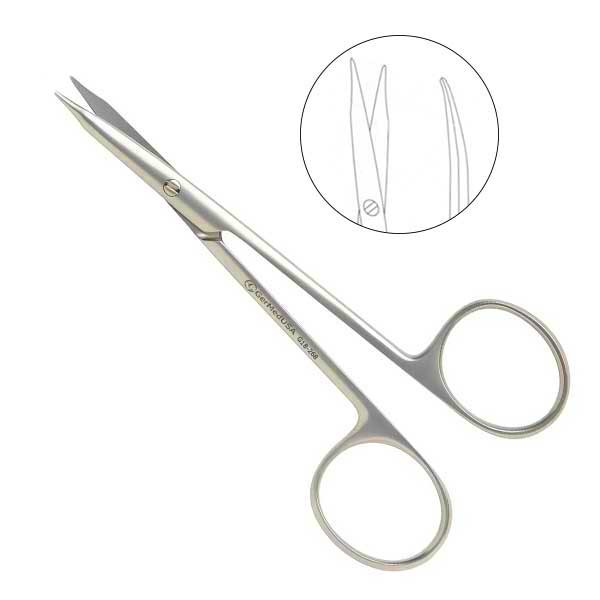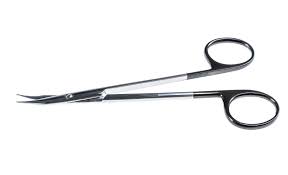Introduction: The Essential Role of Tenotomy Instruments in Surgery
Tenotomy instruments are crucial in delicate surgical procedures, especially in ophthalmology, orthopaedics, and plastic surgery. These precision tools, designed specifically for cutting delicate tissues with accuracy and control, are indispensable for surgeons working with delicate anatomical structures. In particular, instruments such as Stevens Scissors, delicate scissors, and tenotomy scissors are frequently used in surgical settings to achieve the precision necessary in these intricate procedures.
In this article, we’ll explore tenotomy instruments in detail, examine their design and functionality, and discuss the specific applications of various types, such as Stevens Scissors and tenotomy scissors.
1. What Are Tenotomy Instruments?
Tenotomy instruments are specialized surgical tools crafted to cut fine, delicate tissues during procedures. Unlike general scissors, these tools are designed to be precise and reduce the risk of damaging surrounding tissues. Tenotomy instruments are especially vital in surgeries where precision is critical to achieving successful outcomes, such as tendon or muscle release surgeries.
2. The Importance of Precision in Surgical Tools
Tenotomy instruments allow surgeons to cut specific, delicate structures without impacting adjacent tissues. For example, in tendon surgeries, these tools help to make incisions with high accuracy, ensuring that only the necessary area is treated. This reduces patient recovery time and enhances procedural success rates.
3. Understanding the Anatomy of Tenotomy Instruments
Tenotomy instruments generally feature:
- Sharp, narrow blades: Designed for precision cutting.
- Long, slender handles: For easy control and manoeuvrability.
- Angled or straight tips: To provide the optimal approach in different surgeries.
4. Types of Tenotomy Scissors
Several types of tenotomy scissors are used depending on the specific surgical needs. Here are the most common ones:
4.1 Stevens Scissors
- Purpose: Stevens Scissors are ideal for precise tissue dissection and cutting, and they are known for their delicate, sharp tips, and they are known for their delicate, sharp tips.
- Design: Typically featuring delicate, straight, or curved blades.
- Use Case: Commonly used in ophthalmic, plastic, and reconstructive surgeries.
4.2 Delicate Scissors
- Purpose: As the name implies, delicate scissors are used in surgeries that require finesse and subtlety.
- Design: Usually smaller with a lighter frame, allowing for easy handling.
- Use Case: Often preferred in plastic and reconstructive surgery for cutting finer tissue structures.
4.3 Tenotomy Scissors
- Purpose: Specifically designed for tenotomy procedures, they allow surgeons to cut through tendons and soft tissues.
- Design: These may come in straight and curved varieties, providing options for different cutting angles.
- Use Case: Frequently utilized in orthopaedic procedures to release tendons with precision.
5. Key Features of Quality Tenotomy Instruments
When selecting tenotomy instruments, especially in a clinical setting, the following features are essential:
- Precision and Sharpness: High-quality tenotomy instruments are exceptionally sharp to ensure clean cuts.
- Durability: Made from medical-grade stainless steel, they resist corrosion and maintain their sharpness.
- Ergonomics: The handles should be comfortable to reduce surgeon fatigue during lengthy procedures.

6. The Role of Tenotomy Scissors in Specialized Procedures
Tenotomy scissors are often selected for procedures involving delicate tissues like the eyes or tendons, where fine control is essential. These scissors come in various shapes (e.g., curved, straight) and sizes to meet the unique demands of different types of surgeries. Here are a few examples:
- Ophthalmology: In eye surgeries, delicate scissors are indispensable for cutting sensitive tissues.
- Orthopedics: Tenotomy scissors enable surgeons to cut precisely and avoid damaging nearby structures during tendon release surgeries.
- Plastic Surgery: These tools are crucial for intricate soft-tissue work, especially where scarring needs to be minimized.
7. Stevens Scissors vs. Delicate Scissors
Stevens Scissors and delicate scissors might appear similar but serve different purposes:
- Stevens Scissors are typically sharper and have a narrow tip, making them ideal for deep dissection.
- Delicate Scissors are usually slightly less sharp but offer improved control and are proper in areas requiring minimal cutting force.
8. Factors Influencing the Choice of Tenotomy Instrument
A surgeon’s choice of instrument can depend on factors such as:
- Surgical Approach: Curved or straight blades might be preferable depending on the type of tissue and approach required.
- Procedure Duration: For more prolonged procedures, ergonomics and handle design significantly minimize hand fatigue.
- Patient Needs: Some procedures require minimal incision size, which delicate scissors can provide, reducing recovery time.
explore more details about cosmetic surgery instruments
9. Materials Used in Tenotomy Instruments
Most tenotomy instruments are crafted from stainless steel for corrosion resistance and durability. Higher-grade alloys may also be used in premium instruments to ensure longevity, especially under frequent sterilization.
10. Benefits of Using High-Quality Tenotomy Scissors
Investing in high-quality tenotomy instruments provides several benefits:
- Enhanced Precision: Enables cleaner, more accurate cuts.
- Reduced Trauma: Minimizes the risk of collateral tissue damage.
- Longevity: High-grade materials ensure the instruments maintain their edge longer, even with repeated use.

11. Common Surgical Procedures Involving Tenotomy Instruments
The most common procedures using tenotomy scissors include:
- Tendon Release Surgeries: Cutting tendons with minimal trauma.
- Facial Reconstructive Surgery: Delicate dissection in cosmetic and reconstructive procedures.
- Corneal and Retinal Surgeries: Precision tools are vital in ophthalmic procedures to protect sensitive eye tissues.
12. Care and Maintenance of Tenotomy Instruments
Proper care is essential to extend the lifespan of tenotomy instruments. Some maintenance tips include:
- Regular Cleaning and Sterilization: To prevent corrosion and bacterial contamination.
- Proper Storage: Instruments should be stored in a dry, clean environment.
- Frequent Sharpening: To maintain the sharpness necessary for clean cuts.
13. How to Select the Right Tenotomy Instrument
Choosing the right instrument depends on the type of procedure and the surgeon’s preference. Here’s a simple guide:
- Stevens Scissors for highly precise and deep cuts.
- Delicate Scissors when minimal trauma is essential.
- Tenotomy Scissors for cutting tendons and soft tissue in orthopaedic surgeries.
14. Innovations in Tenotomy Instruments
Advances in surgical tools now offer options such as ergonomic handle designs and lightweight alloys, which provide surgeons with more comfort and reduce hand fatigue during long surgeries.
15. Frequently Asked Questions (F.A.Q.s) About Tenotomy Instruments
Q1. What is the difference between Stevens Scissors and tenotomy scissors?
Stevens Scissors are designed for precision tissue dissection, while tenotomy scissors are primarily used for cutting tendons and soft tissues.
Q2. Why are delicate scissors important in surgery?
Delicate scissors allow surgeons to cut sensitive tissue precisely, minimizing the risk of collateral damage.
Q3. How do I maintain tenotomy instruments?
Regular cleaning, sterilization, and storage in a dry environment help maintain their sharpness and integrity.
Q4. Can Stevens Scissors be used interchangeably with other tenotomy instruments?
While they can be used in similar procedures, their unique design suthem em,, especially for deep dissection and fine tissue work.
Q5. Are tenotomy scissors available in different shapes?
Yes, tenotomy scissors come in straight and curved designs, allowing optimal positioning in various procedures.
Q6. What are the primary uses of tenotomy scissors?
They are primarily used in tendon cutting, ophthalmic surgery, and delicate soft-tissue dissection.
Conclusion
Tenotomy instruments like Stevens Scissors, delicate scissors, and tenotomy scissors are fundamental in surgeries requiring high precision. Whether performing an intricate tendon release or delicate dissection, these tools allow surgeons to achieve remarkable accuracy, minimizing tissue trauma and aiding in patient recovery. As surgical techniques and tools evolve, the demand for well-designed, high-quality tenotomy instruments will continue to grow, underscoring their importance in advancing medical care.








